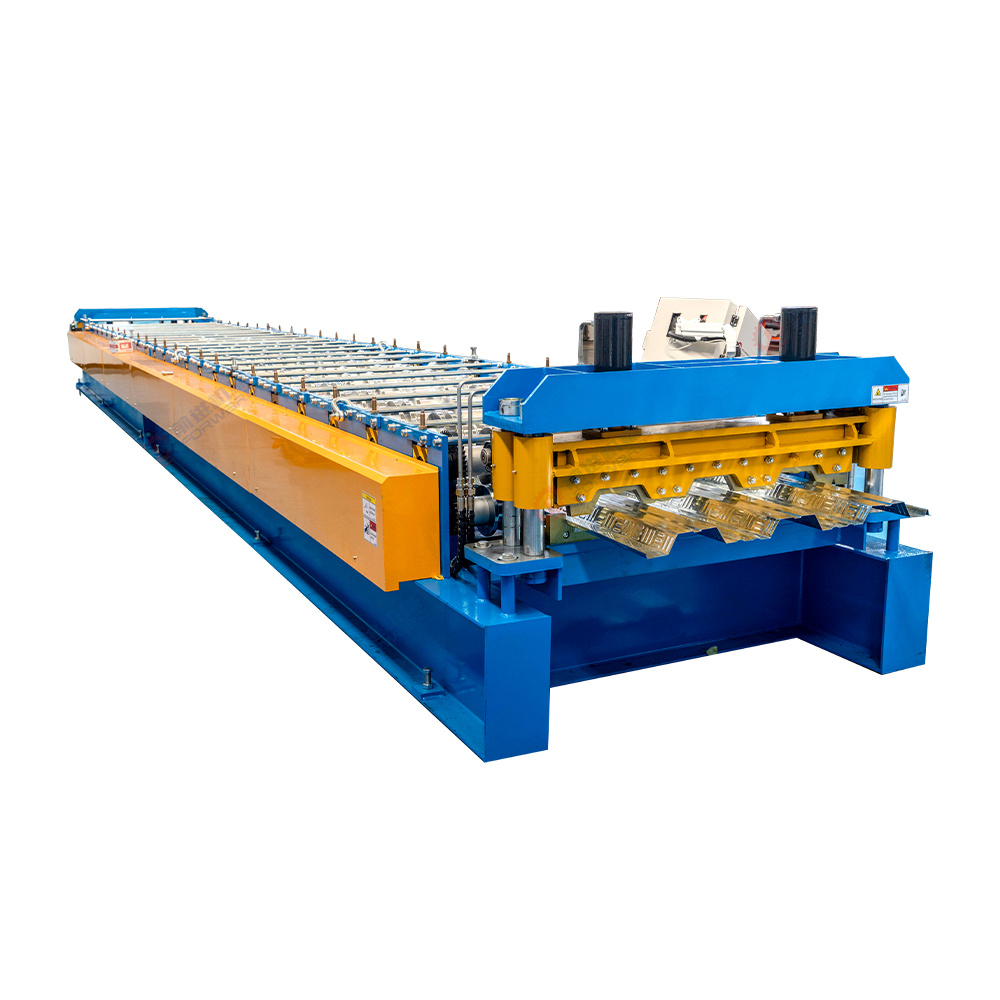The Role of Profile Roll Forming Machines in Sustainable Manufacturing

The Role of Profile Roll Forming Machines in Sustainable Manufacturing
Introduction to Profile Roll Forming Machines
Profile roll forming machines are vital in modern manufacturing, particularly when it comes to sustainability. These machines are designed to transform metal sheets into specific profile shapes through a continuous bending process, enhancing efficiency while minimizing waste. This article will delve into how these machines contribute to sustainable practices in manufacturing, ensuring that industries can meet their production needs without compromising the environment.
The Basics of Profile Roll Forming
Understanding the Process
Profile roll forming involves feeding a continuous strip of metal through a series of rolls that gradually shape it into the desired profile. Unlike traditional fabrication methods, this process allows for high-speed production with minimal waste. The result is a precisely formed product, whether it be sections for construction, automotive parts, or energy-efficient components.
Types of Materials Used
The versatility of profile roll forming machines is evident in the variety of materials they can handle. Common materials include:
- **Steel**: Widely used for its strength and durability.
- **Aluminum**: Lightweight, corrosion-resistant, and recyclable.
- **Copper**: Excellent for electrical conductivity in components.
- **Plastic and Composite Materials**: Emerging options increasing in popularity due to their lightweight and insulating properties.
Efficiency and Waste Reduction in Manufacturing
Minimizing Scrap Material
One of the most significant advantages of using profile roll forming machines is their ability to minimize scrap material. With a continuous feed process, manufacturers can produce long lengths of profiles without interruption, significantly reducing the amount of waste generated compared to traditional cutting methods.
Energy Efficiency
Profile roll forming machines are engineered for energy efficiency. They operate at high speeds, reducing production time and energy consumption. Additionally, the ability to produce parts in bulk allows for optimized energy use throughout the manufacturing process.
The Environmental Impact of Sustainable Manufacturing
Reducing Carbon Footprint
By utilizing profile roll forming machines, manufacturers can significantly lower their carbon footprint. The enhanced efficiency leads to reduced energy consumption and lower greenhouse gas emissions. Moreover, using recyclable materials further supports a circular economy, where resources are reused and recycled, minimizing environmental impact.
Supporting Renewable Energy Solutions
Profile roll forming machines play a crucial role in producing components for renewable energy systems, such as solar panels and wind turbines. These machines create the necessary structural elements that support these technologies, facilitating the transition to sustainable energy sources.
Innovations in Profile Roll Forming Technology
Automation and Smart Manufacturing
With the advent of Industry 4.0, profile roll forming machines are becoming increasingly automated. Advanced technologies, including robotics and artificial intelligence, enable manufacturers to achieve higher precision and consistency in production. This automation reduces human error, further enhancing sustainability by minimizing waste.
Adaptive Roll Forming Techniques
Recent innovations in roll forming technology have led to the development of adaptive roll forming machines, which can adjust their settings based on the specific requirements of each project. This flexibility allows manufacturers to optimize their processes for different materials and designs, leading to even greater efficiency and reduced waste.
Case Studies: Successful Implementation of Profile Roll Forming Machines
Case Study 1: Automotive Industry
In the automotive sector, companies have adopted profile roll forming machines to produce lightweight components that enhance fuel efficiency. By utilizing aluminum and high-strength steel, these manufacturers have reduced vehicle weight, leading to lower emissions during operation.
Case Study 2: Construction Sector
The construction industry has also benefited from the use of profile roll forming machines. These machines produce structural components that are both strong and lightweight, reducing the overall material required for construction projects. The result is a more sustainable, efficient building process.
Challenges in Adopting Profile Roll Forming Machines
Initial Investment Costs
While the long-term benefits of profile roll forming machines are substantial, the initial investment can be a barrier for some manufacturers. However, the potential for cost savings in material efficiency and energy consumption often outweighs these upfront costs.
Training and Skill Development
To fully leverage the benefits of profile roll forming machines, companies must invest in training their workforce. Skilled operators are essential for optimal machine performance and product quality, ensuring the sustainability goals are met.
The Future of Profile Roll Forming in Sustainable Manufacturing
Emerging Trends and Innovations
As the manufacturing industry continues to evolve, profile roll forming machines will likely adapt to new trends, such as the increased use of smart materials and eco-friendly practices. Innovations in materials science and machine technology will drive further efficiencies and sustainability.
Collaborative Efforts in the Industry
Collaboration among manufacturers, suppliers, and researchers will be crucial in expanding the capabilities and applications of profile roll forming machines. By working together, these stakeholders can share knowledge, resources, and technologies, fostering a more sustainable manufacturing landscape.
Conclusion
Profile roll forming machines are not just about efficiency; they are a pivotal part of sustainable manufacturing practices that can significantly reduce waste, energy consumption, and environmental impact. As industries strive for greener solutions, these machines will continue to play a crucial role in advancing sustainability. By embracing innovative technologies and refining production processes, manufacturers can contribute to a more sustainable future while meeting the growing demand for high-quality products.
FAQs
1. What is a profile roll forming machine?
A profile roll forming machine is a type of equipment used to shape metal sheets into specific profiles through a continuous bending process.
2. How does profile roll forming contribute to sustainability?
Profile roll forming contributes to sustainability by minimizing waste, reducing energy consumption, and supporting the production of components for renewable energy systems.
3. What materials can be used in profile roll forming?
Common materials include steel, aluminum, copper, and plastic or composite materials, allowing for versatility in manufacturing.
4. What are the benefits of automation in profile roll forming?
Automation enhances precision, reduces human error, optimizes energy use, and increases production speed, all contributing to sustainability.
5. Are there any challenges in adopting profile roll forming machines?
Initial investment costs and the need for skilled operators are common challenges, but the long-term benefits typically outweigh these obstacles.
Key words:
recommend News
Share



